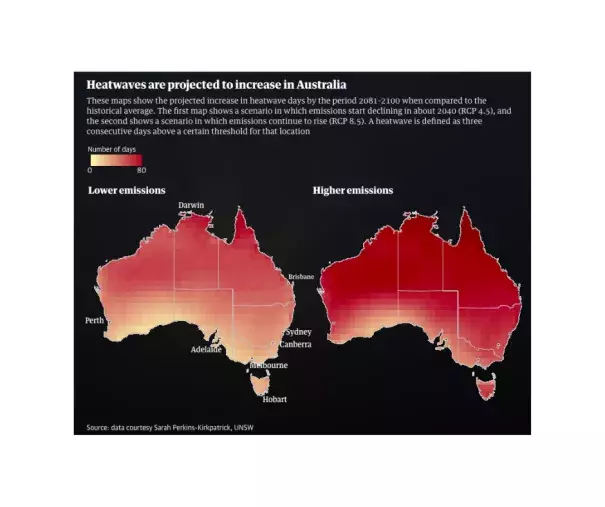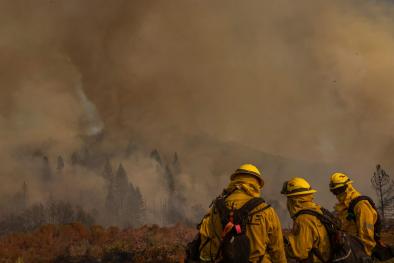Killer heat: how a warming land is changing Australia forever

Climate Signals Summary: Climate change is increasing the frequency, intensity, and duration of extreme heat and heat waves, and this has serious health consequences.
Article Excerpt: Patricia and Norman Frank say extreme heat is changing the daily lives of people who have lived on the land for generations. The siblings are traditional owners from Tennant Creek in the heart of the Northern Territory outback.
The region around Tennant Creek is one of the hottest parts of Australia.
...
People used to live in tin sheds all year round, says Norman, but that is no longer possible.
“Today you go underneath a tin shed, you’ll be fried.”
...
Australia is heating faster than the global average. Across the continent and throughout the year, it is 1.4C warmer than it was early last century. But that figure alone can be misleading.
As temperatures increase due to escalating greenhouse gases in the atmosphere, maximum temperatures rise even more sharply.
Scientists warn the greatest threat is an escalation in heat waves. These can be driven by both human carbon dioxide emissions and natural phenomena, but the evidence that they are increasing due to the former is clear.
Australia’s seven hottest days on record were in the second half of December, 2019. Prior to 2018, there were only four days on which the maximum temperatures across the country were on average hotter than 40C. In the past two years there have been 18.
Karl Braganza, the Bureau of Meteorology's manager of climate monitoring, says the number of extreme heat days — those hotter than 35C — has increased five-fold in just the past 30 years.
That trend was predicted and is projected to continue.
...
The health effects of this will be profound, says Dr Diana Egerton-Warburton, an emergency doctor at Monash Health in Melbourne.
Extreme heat strikes the body at a cellular level, breaking down fats and protein. “That’s really scary because it can have effects right from the brain to the heart to the kidneys,” Egerton-Warburton says.
It leads to more heart attacks, strokes, mental health problems and increased risk of injury: “There is clear evidence that it is killing people prematurely”.
The mortality rate increases nearly 20% when the average temperature across a 24 hour period is above 30C, she says. “When the overnight minimum is 24C or above is really when our heat health alert steps in.”
...
In Tennant Creek last year, there were 113 nights during which the temperature stayed above 24C, the level at which health concerns are raised.
The town is on Warumungu land; more than 50% of the population is Indigenous. Norman and Patricia say their people have been left feeling helpless as rising heat has broken a connection with the land that stretches back millennia.
Related Content



